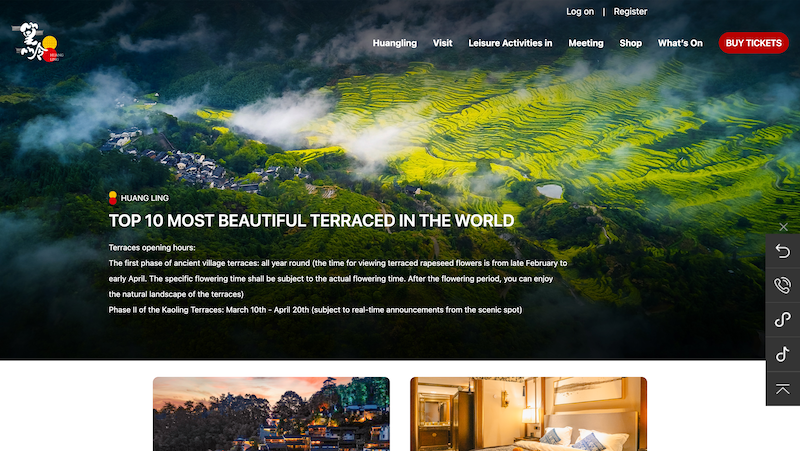1. Cultural & Historical Significance
- "Shai Qiu" Origins: For centuries, villagers dried crops like chili and corn on wooden racks, creating a kaleidoscopic "land art" now recognized as a "Most Beautiful Chinese Symbol" by UNESCO.
- Architecture: 100+ Ming/Qing-era Huizhou houses cling to cliffs at 600m elevation, forming a "fan-shaped" layout around ancient feng shui forests.
2. Natural Wonders
- Terraced Landscapes:
- Spring: Golden rapeseed flowers (Mar–Apr) cascade down 1,000+ mu (67 hectares) of slopes.
- Autumn: Red maple leaves contrast with sun-dried harvests (Oct–Nov).
- Biodiversity: 500-year-old redwood groves and rare birds like silver pheasants thrive here.
3. Key Attractions
- Tianjie (Sky Street): A 388m flagstone path lined with artisan shops selling woodcarvings and qiyun tea.
- Leixin Glass Bridge: A 298m suspension bridge with a transparent midsection overlooking valleys.
- Liuguang Forest: Nighttime LED-lit trails with interactive installations like "Starry Footpath".
4. Seasonal Activities
- Apr–Jun: Join flower festivals and bamboo-rafting.
- Sep–Dec: Photograph Shai Qiu or attend the Harvest Moon Ceremony.
- Year-round: Stay in Shaiqiu Meisu, boutique lodges converted from Ming-era mansions.
5. Conservation & Tourism
- Eco-Protection: Daily visitor caps (5,000) and solar-powered cable cars minimize footprint.
- Awards: "Asia’s Top Rural Revitalization Project" (2024) and "Global Top 10 Terraces".
6. Practical Info
- Location: 9km from G56 Hukou exit, 1.5hrs from Shangrao.
- Tickets: ¥145 (includes cable car); night tours ¥60.
- Tip: Visit at dawn to avoid crowds and capture mist-shrouded vistas.
Conclusion
Huangling is a living postcard of China’s agrarian heritage—where poetry, ecology, and human ingenuity converge. For global travelers, it offers an immersive journey into rural China’s timeless charm.



